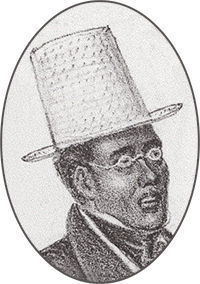Suggested Introductory Lesson
PURPOSE:
Introduce students to the utopian community in Florence and put its founding into historical context.
MATERIALS:
Document 1 – Slave Auction Price List (1860)
Document 2 – Northampton Association of Education and Industry (NAEI) Constitution (1842)
PLAN OF INSTRUCTION:
When school groups visit the museum, we introduce them to the NAEI and give them necessary historical context using these two documents. Since students are now creating their own walking tours before they get to Florence, it is useful to give them this information before they start work. How long this takes depends largely on how much of this is new material versus review.
This is not a structured lesson plan. It puts two primary source documents into teachers’ hands along with suggestions on how to use them to cover important points. Key terms that warrant further discussion are underlined. It is left to the teacher to decide how to present this material. Another option is to invite a DRC scholar to visit the classroom and co-teach this unit.
Document 1: Slave Auction Price List (1860)
This document serves as a stark reminder of the conditions of enslaved persons in 1842, almost 20 years before this particular auction was held. Slavery was a firmly entrenched economic and political institution, thanks to “King Cotton” and the so-called “Slave Power.” One in seven Americans, or 2.5 million persons, were “Slaves for Life” in 1842. Slavery was a system of institutionalized terror and torture that reaped enormous profits for a few. Slavery was not disappearing, it was growing and becoming even more cruel. This document is evidence of family separation that was integral to the “Second Middle Passage.”
The United States was divided between “Slave States” and “Free States”. Northern states were deeply complicit in the economics of slavery, making the cause to end it deeply unpopular everywhere. An important shift occurred in 1831 when William Lloyd Garrison began publishing his weekly anti-slavery newspaper The Liberator. He staked out a position as a “radical abolitionist” that attracted a small, but fiercely committed group of followers.
Document 2: NAEI Constitution (1842)
This is a very rich document that can open onto a host of different discussions. In the spring of 1842, a small group of committed Garrisonian abolitionists decided to join forces and buy a property in Florence with the intention of starting a utopian community. Their first act was to draft and ratify this constitution. It combined elements of the Declaration of Independence and the U.S. Constitution. The first part articulated core principles that the organizers believed in, while the second part laid out procedures of governance that reflected their values.
We primarily focus on the opening paragraphs and Numbers I-V of the preamble. Interestingly, the issue of slavery is never directly addressed. Instead, the founders of the NAEI focused on the effects of growing socio-economic inequality in the rapidly industrializing North. They wished to create an alternative “moral economy” to the emerging “market economy”. They were reformers on a mission to improve themselves and the lives of others. They were “non- resistants”, pacifists who rejected the coercive nature (as they saw it) of government and organized religion. Their form of religion favored reason over dogma and “free expression” over subservience to ordained power.
Most strikingly, their constitution removed structural barriers to full participation as members of the NAEI in Number V. Everyone received equal treatment regardless of race, gender, class or religion. This experiment in ”radical equality” set them apart from existing social norms and from other utopian communities. They were unique in this.
A number of broad, rather abstract concepts are introduced here (see underlined). It is useful to touch on them at the outset to help orient students toward learning more about individual members of the Association. These concepts will make better sense to them as they get into their work with the Source Packets.
The Articles and By-Laws laid out very specific procedures of governance. Like the U.S. Constitution, this was essentially a “power-sharing” agreement. This was especially apparent in Article 7, which apportioned decision-making power between workers and investors.
At this point it’s fun to ask students what issues they would address if they were writing constitutions for their own planned communities, and list them. Some issues might include: How are decisions made? Do you want leaders? If so, how are they chosen and held to account? How do you become a member? Are there rules everyone has to follow? How does the community support itself? Does everyone have to work? What about kids? Do you get to keep what you earn?
This gets very complicated very quickly but students like it. This exercise serves as a graphic example of “voluntary association”, the principle where the individual is willing to cede rights in the interest of the greater good and her own long-term interests. We also see that rights come with responsibilities, that you earn the former by willingly taking on the later. You also protect your own inherent, or human rights, by respecting and protecting the rights of others.





